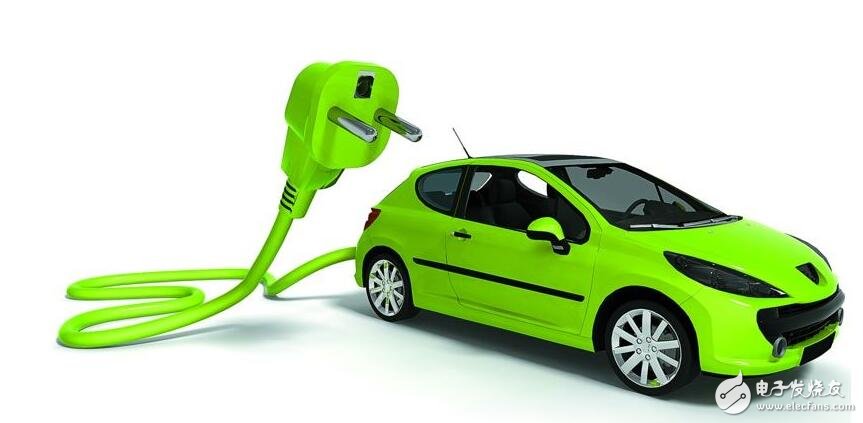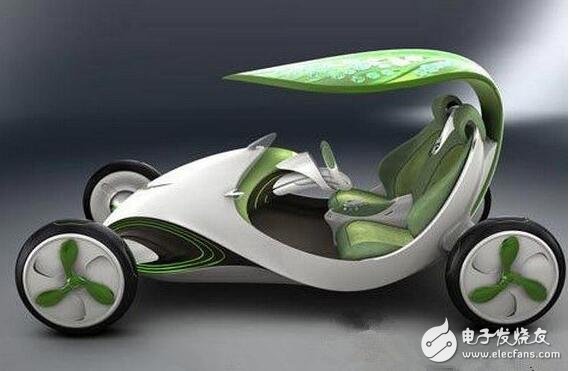New energy vehicle promotion and application policy inventory (2017)
New energy vehicles are in the development stage, so how will the country promote new energy vehicles? Do you know the status quo of new energy vehicles? This article mainly introduces the status quo of new energy vehicles and national promotion policies, to find out together.
The status quo of new energy vehicles1. The situation of the models announced by the Ministry of Industry and Information Technology
Since the Ministry of Industry and Information Technology released the "New Energy Vehicle Manufacturing Enterprises and Product Access Management Rules" in 2009, about 50 passenger car companies have passed the enterprise access examination and obtained the qualification for new energy vehicle production. Nearly 300 new energy passenger cars of various types and styles have been declared.
2. Market development
China's new energy automobile industry began in the early 21st century. Its basic development model is “government + market†promotion. That is, the central and local governments actively participate in and support the research and development and marketing of new energy vehicles, thus driving the auto companies to vigorously develop their own autonomy. R&D, quickly reach the mode of mass production and market introduction. After only a few decades of development, the production and sales volume of new energy vehicles in China has ranked first in the world for five consecutive years and will continue to maintain a high growth trend.
As mentioned above, the biggest dividend for the rapid development of the new energy automobile industry is the support of national policies. As a result, the sales of new energy vehicles in China are unique in the world. In particular, from 2014 to 2015, the central government intensively introduced a series of new new energy vehicle industry policies, and local governments have successively introduced corresponding supporting policies. Domestic auto companies have accumulated a lot of opportunities, seized opportunities, and launched different specifications and price points. The production and sales of new energy automobile products have become a blowout. In 2015, the global sales volume was 549,000 units, and the number of new energy vehicles sold in China reached 331,000 units, accounting for 60% of the total global sales, and it is still in a high-speed development stage.
3. Planning of new energy vehicles in various automobile depots
Due to the limitation of the cruising range of pure electric vehicles, the auto companies have changed from the initial development of pure electric vehicles to the mix of pure electric and plug-in hybrid products. With the advancement of battery technology and the construction of infrastructure, the goal of the vehicle is purely electrified.
4. Current consumption of new energy vehicles
From the current situation of buying new energy vehicles, 70% of new energy vehicles are personal consumption, and 30% are units or public utilities. With the development of the market, the growth rate of personal consumption will be much greater than the growth rate of public consumption, and the proportion will increase to 90%.

1, troubles in cruising range
The cruising range of pure electric vehicles in new energy vehicles under comprehensive conditions has increased from 80-90 km three years ago in battery technology and vehicle performance has improved to 140-160 km, but still has not reached the user's expectations. . According to customer research, the mileage of a pure electric vehicle on a single charge should reach more than 300 kilometers. The technical upgrade of pure electric vehicles still has a long way to go. In order to solve the contradiction between technology and demand, coupled with the goal of 5 liters of fuel consumption by 2020, major auto companies have accelerated the development and market launch of plug-in hybrid (Plug-in) models. However, due to the construction and layout of the charging facilities can not meet the requirements of people's travel, the use of plug-in hybrid cars has become a traditional gasoline car, still can not achieve the national energy-saving emission reduction and green development goals and original intentions. At the moment of the rapid development of new energy vehicle technology, the construction and usability of charging facilities have become the bottleneck and key factor that restricts the consumption ecology of new energy vehicles.
The cumulative production of domestic new energy vehicles has reached nearly 500,000 units. Compared with the outbreak of new energy vehicles, the construction of charging facilities is far behind. As of the end of 2015, the domestic vehicle-pile ratio is about 7:1, far below the standard configuration of 1:1, and the pile-to-pile ratio is seriously imbalanced. As the sales of new energy vehicles continue to rise, the construction gap of charging piles will further increase, which will restrict the promotion of new energy vehicles. Although in the second half of 2015, the State issued two "Guiding Opinions on Accelerating the Construction of Electric Vehicle Charging Infrastructure" and "Guidelines for the Development of Electric Vehicle Charging Infrastructure (2015-2020)", proposed the construction of charging piles. In accordance with the principle of “pile station firstâ€, moderate advance construction will boost the construction of charging facilities, but in the specific construction, it will be delayed and worried by various factors such as planning permission, construction permit, residential property and owners’ understanding of new energy vehicles. Factors such as charging pile construction are still slow, and it is imperative to accelerate the construction of charging piles.
2, charging compatibility troubles
The problems faced by the domestic charging network also include the inconsistency of the charging interface. Each enterprise has its own staking in the construction of charging piles. The charging interface standards used are different. The compatibility of charging equipment has certain problems. The charging of different depots The pile can only adapt to its own car, which limits the development of the charging pile to a certain extent, and also reduces the utilization rate of the equipment for the charging operator.
In December 2015, the state issued five new national standards for charging interfaces and communication protocols for electric vehicles. The new standard will be implemented on January 1, 2016. The new standard provides a comprehensive and systematic specification of the charging interface and communication protocol, and has been effectively improved in terms of security and compatibility. Although the charging interface is unified under the new standard, different types of charging piles installed during the transition period are still not fully utilized.
3, charging convenience troubles
According to the current charging time and the distribution of charging piles, as well as many unfavorable factors in the construction of personal charging piles, the convenience of charging has become an important reason for restricting the consumption of new energy vehicles.
4, for the last 1 km of the time-sharing leased car
In order to promote the market and the introduction of new energy vehicle technology, the time-sharing model is adopted. Considering that the operating costs are mainly concentrated in a certain area, it is difficult to arrange at all points to realize the convenient pick-up and return of the Door to Door.

1. Ningbo: The subsidy standard for 2017 will drop by 20% on the basis of 2016.
"2016-2017 Ningbo New Energy Vehicle Promotion and Application Funds Subsidy Management Measures" shows that in 2016, pure electric buses (including supercapacitor pure electric buses) will be subsidized according to the central and local ratios of 1:1; other passenger cars are in accordance with the central and local A subsidy of 1:0.5 ratio. Pure electric and plug-in hybrid vehicles (including extended programs) (logistics, sanitation, engineering) and trucks are subsidized according to the ratio of central and local 1:0.5, and each vehicle is subsidized up to 20,000 yuan.
The pure electric passenger car is subsidized according to the driving mileage. The driving mileage is 100km ≤ R "150km pure electric passenger car subsidy 10,000 yuan, 150km ≤ R "250km pure electric passenger car subsidy 20,000 yuan, R ≥ 250km The pure electric passenger car is subsidized by 30,000 yuan; the plug-in hybrid (including the extended program) passenger car is given a subsidy of 10,000 yuan. The mini-car (2 seats) is subsidized 50% of this subsidy standard. Fuel cell vehicles are subsidized at a 1:1 ratio between the central and local sources.
2, Wuhu: 2017-2018 subsidy standard decreased by 20% on the basis of 2016
The “Measures for the Administration of Financial Subsidy Funds for the Promotion and Application of New Energy Vehicles in Wuhu City (2016-2020)†clarifies that in 2016, the subsidies for pure electric passenger vehicles will be 10,000 yuan/200,000 yuan per vehicle. The logistics vehicles shall be given municipal subsidies in accordance with the proportion of 30% of the state subsidy standard. The municipal subsidies shall not exceed 15,000 yuan per vehicle. The subsidy standard for 2017-2018 will be reduced by 20% on the basis of 2016, and the subsidy standard for 2019-2020 will be reduced by 40% from 2016.
3, Qinghai: 50% subsidy according to the national standard
The Qinghai Provincial Department of Commerce, the Department of Commerce and the Economic and Information Committee jointly issued the "Administrative Measures for the Promotion and Purchase of New Energy Vehicles in Qinghai Province", clarifying that in 2016-2020, Qinghai Province's new energy vehicles will be subsidized according to the national subsidy standard of 1:0.5.
4, Inner Mongolia: 50% subsidy according to the national standard
The General Office of the Inner Mongolia People's Government issued the “Implementation Opinions on Accelerating the Promotion and Application of New Energy Vehiclesâ€. The implementation opinion pointed out that by 2020, the region will promote the application of new energy vehicles to 100,000 units (standard vehicles). In Inner Mongolia, the units and individuals that purchase, register and use new energy vehicles in the autonomous region, the autonomous region grants a purchase subsidy according to the ratio of the national subsidy standard of 1:0.5.
5, Jilin: 50% subsidy according to the national standard
The “Measures for the Administration of Subsidy Funds for the Promotion and Application of New Energy Vehicles in Jilin Province†clarifies that the provincial subsidy standards for 2016.8-2020 are subsidized according to 50% of the national subsidy standards for the same period, that is, subsidies are provided at a ratio of 1:0.5 at the national and provincial levels.
6. Hunan: New energy passenger vehicles are subsidized by 10% of the national standard
Hunan Province issued the "Hunan Province 2016-2020 New Energy Vehicle Promotion and Application Awards and Supplements Policy" notice, stipulating that in 2016-2020, Hunan Province will promote the application of various types of new energy vehicles with a target of 156,000 vehicles.
For the purchase of new energy buses, the provincial financial purchase award will be awarded according to 25% of the central financial subsidy standard of the year. For non-public transport units that purchase more than 30 new energy buses in a lump sum and use them for leasing operations, the provincial financial purchase awards will be awarded according to 30% of the central financial subsidy standards of the year. For the purchase of new energy passenger cars, the provincial financial purchase awards will be awarded according to 10% of the central financial subsidy standards of the year. For the purchase of new energy-specific vehicles, support will be provided through policies such as the relaxation of restrictions.
Ceshi Xiaojuzizhi Gold spiral evil vehicle parts
cccccccccccccccccccvvvvvvvvvvvvvvvvvvvvvvvvvvvvxvxvxvxvvvvvvvvvvvvvvvvvvvvvvvvvvvvvvvvvvvvvvvvvvvvvvvvvvvvvvvvvvvvvvvvvvvvvvvvvvvvvvvvvvvvvvvvvvvvvvvvvvvvvvvvvvvvvvvvvvvvvvvvvvvvvvvvvvvvvvvvvvvvvvvvvvvvvvvvvvvujfgjfvvvvvvvvvvvvvvvvvvvvvvvvvvvvvvvvvvvvvvvvvvvvvvvvvvvvvvvvvvvvvvvvvvvvvvvvvvvvvvvvvvvvvvvvvvvvvvvvvvvvvvvvvvvvvvvvvvvvvvvvvvvvvvvvvvvvvvvvvvvvvvvvvvvvvvvvvvvvvvvvvvgjnfgjfvvvvvvvvvvvvvvvvvgjfcjnfcvvvvvvvvvvvvvvvvvvvvvvvvvvvvvvvvvvvvvvvvvvvvvvvvvvvvvvvvvvvvvvvvvfhdfhdhvvvvvvvvvvvvvvvvvvvvvvvvvvhjvvvvvvvvvvvvvvvvvvvvvvvvvvvvvvvvvvvvvvvvvvvvvvvvvvvvvvvvvvvvvvvvvvvvvvvvvvvvvvvvvvvvvvvvvvvvvvvvvvvvvvvvvvvvvvvvvvvvvvvvvvvvvvvvvvvvvvvvvvvvvvvvvvvvvvvvvvvvvvvvvvvvvvvvvvvvvvvvvvvvvvvvvvvvvvfhfchxcfvvvvvvvvvvvvvvvvvvvvvvvvvvvvvvvvvvvvvvvvvvvvvvvvvvvvvvvvvvvvvvvvvvvvvvvvvvvvvzzzzzzzzzzzzzzzzzzzzzzzzzzzzzzzzzzzzzzzzx
xiaojuzizhi Manufacturer of Orange Enzyme Solution in China,dog ktv dfdv
Bossgoo(China)Tecgnology , https://www.cn-gangdao.com